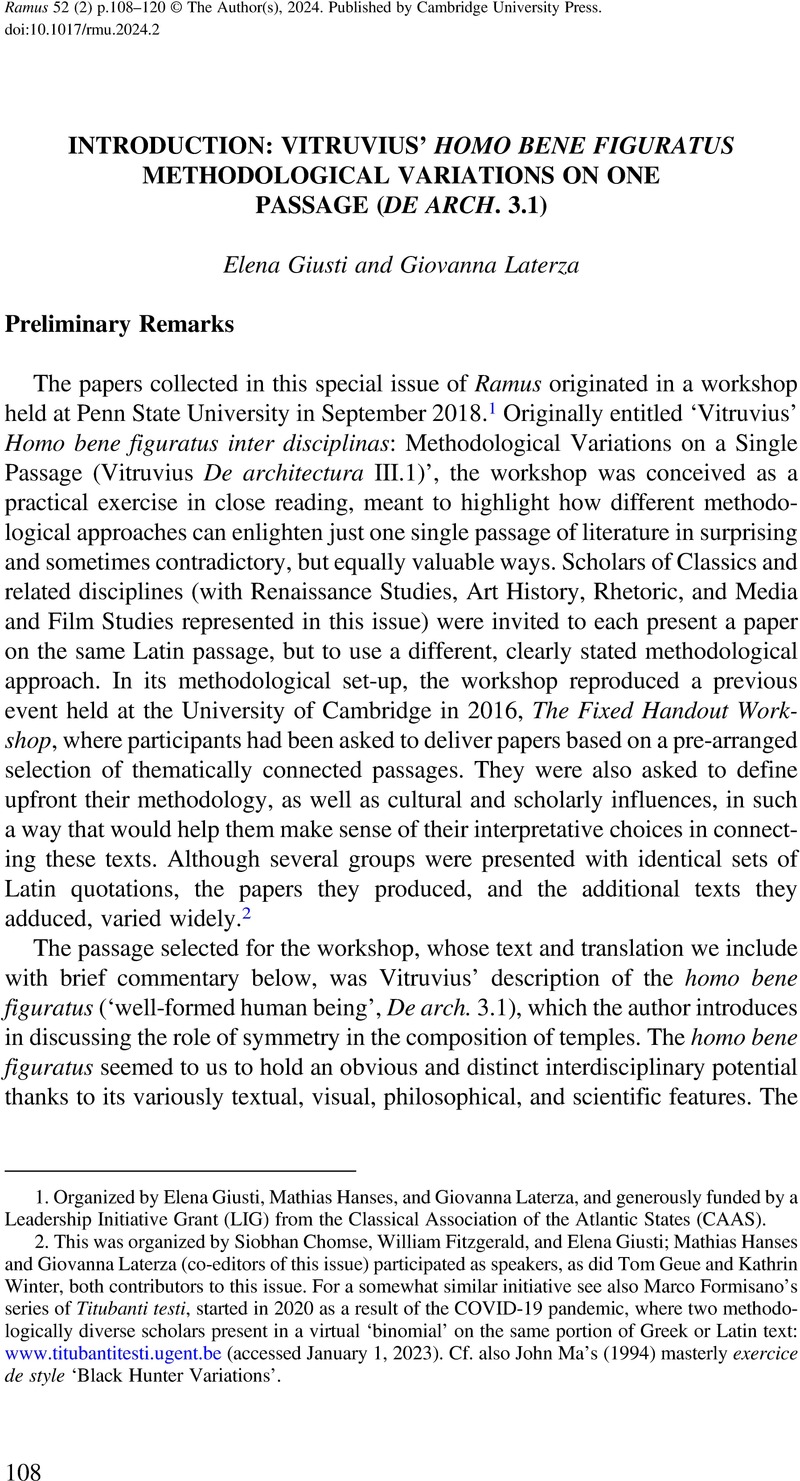No CrossRef data available.
Published online by Cambridge University Press: 27 May 2024

1. Organized by Elena Giusti, Mathias Hanses, and Giovanna Laterza, and generously funded by a Leadership Initiative Grant (LIG) from the Classical Association of the Atlantic States (CAAS).
2. This was organized by Siobhan Chomse, William Fitzgerald, and Elena Giusti; Mathias Hanses and Giovanna Laterza (co-editors of this issue) participated as speakers, as did Tom Geue and Kathrin Winter, both contributors to this issue. For a somewhat similar initiative see also Marco Formisano's series of Titubanti testi, started in 2020 as a result of the COVID-19 pandemic, where two methodologically diverse scholars present in a virtual ‘binomial’ on the same portion of Greek or Latin text: www.titubantitesti.ugent.be (accessed January 1, 2023). Cf. also John Ma's (1994) masterly exercice de style ‘Black Hunter Variations’.
3. Kahane and Laird (2001).
4. Cuomo and Formisano (2016); McEwen (2003); Nichols (2017); Oksanish (2019).
5. Courrént (2011) and (2019). Cf. also Courrént (2008).
6. Callebat (2017a) and (2017b).
7. Gros (2013) and (2015).
8. Marden Fitzpatrick Nichols (author of Nichols [2017]) participated as speaker at the workshop but did not contribute a paper to this collection. The work of Giovanna Laterza (co-editor of this issue) is also currently focused on Vitruvius (see Laterza [2018]).
9. Deborah Chatr Aryamontri attempted such a reading at the workshop but did not contribute a paper to this special issue.
10. Battersby (2011); Haraway (1991).
11. Granger (1931).
12. Gros (1990) and Gros, Corso, and Romano (1997).
13. Both editions, for instance, print the Greek terms rather than the Latin transliterations, as Granger (1931) does. See Persyn, n.24, in this volume.
14. On technical treatises as tools of ordering knowledge, see König and Whitmarsh (2007).
15. On the issue of canonicity within Classics, see Formisano (2018).
16. Gros (1990), 6, adopts the reading pansa, on the basis of a possible contradiction with the measure given to the palm at 3.1.8 below. For a defense of palma see Gros, Corso, and Romano (1997), 277.
17. Gros (1990), 9, prints the conjecture duplicationem (‘doubling’); Gros, Corso, and Romano (1997), 240, print the reading superlationem (‘enlargement’); Granger (1931) links otherwise nonsensical supplicationem to Greek ὑποπλέκειν.
18. Gros (1990), 10, corrects terminauit to terminatio, accepted by Gros, Corso, and Romano (1997), 281.
19. Text and translation by Granger (1931).
20. Note that ratio, variously rendered by Granger (1931) as ‘method’ or ‘plan’ is a key term in the passage. As Gros, Corso, and Romano (1997), 273, note, it refers here to the ‘criterion’, or the ‘entire system of principles’ of symmetry.
21. See Stavru (2013).
22. Gros (1990), 62; Zöllner (2009).
23. Cf. Laterza (2018).
24. Cf. Novara (2005), 129.
25. Formisano (2016).